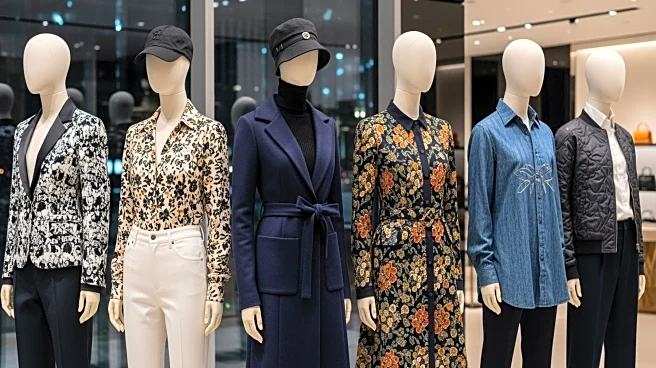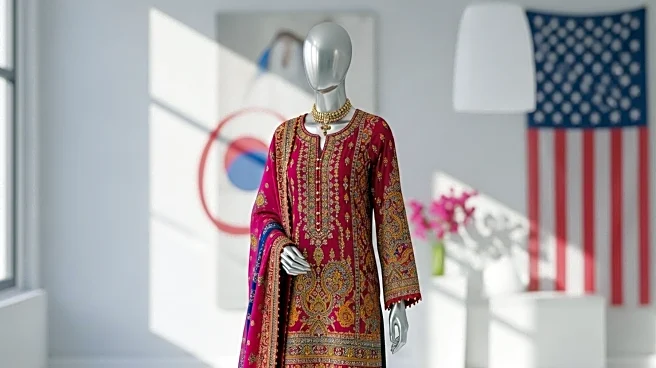What's Happening?
Fashion brands are facing a dilemma as their clothing is increasingly worn by individuals associated with extremist movements. The Italian brand Stone Island, known for its technical fabrics and garment-dyeing
expertise, has been seen on far-right activist Tommy Robinson during protests and court appearances. Robinson, a former member of the British National Party, has multiple criminal convictions and has been photographed wearing Stone Island at various public events. This trend is not isolated to Stone Island; other brands like Fred Perry and New Balance have also been co-opted by extremist groups, leading to public relations challenges. Fred Perry, for instance, temporarily pulled a polo shirt design after it became associated with the Proud Boys, a far-right organization in the U.S. Brands have limited control over who wears their clothes, but the association with extremist groups can impact their public image.
Why It's Important?
The adoption of fashion brands by extremist groups poses significant challenges for these companies, affecting their brand image and consumer perception. As these groups use clothing as a symbol of identity, brands risk being inadvertently associated with ideologies that contradict their values. This can lead to backlash from consumers and damage to brand reputation. For companies like Stone Island, which have historical ties to subcultures, the association with extremism can undermine their cultural significance and alienate their core fanbase. Brands must navigate these associations carefully to maintain their market position and uphold their values, often requiring strategic public relations efforts and community engagement to counter negative perceptions.
What's Next?
Fashion brands may need to implement strategies to distance themselves from extremist associations. This could include public statements, sponsorship of anti-racist initiatives, or collaborations with organizations that align with their values. Brands like Lonsdale have successfully reclaimed their narrative by emphasizing inclusivity and diversity in their marketing campaigns. As the internet and social media continue to influence brand narratives, companies must be proactive in managing their image and addressing unwanted endorsements. The challenge lies in balancing these efforts without alienating their existing customer base, which may still hold strong ties to the brand's original cultural roots.
Beyond the Headlines
The use of fashion as a political symbol highlights broader societal issues, including the rise of coded clothing as a form of expression among extremist groups. This trend reflects a shift from overt symbols to more subtle forms of identification, complicating efforts to regulate and counter extremist ideologies. The phenomenon underscores the need for brands to be vigilant in monitoring how their products are used and perceived in the public sphere. It also raises ethical questions about the role of fashion in cultural and political discourse, challenging brands to consider their impact on society beyond mere consumerism.












